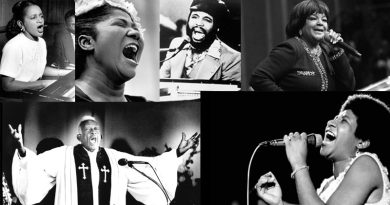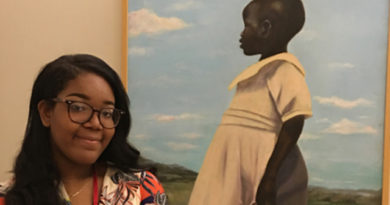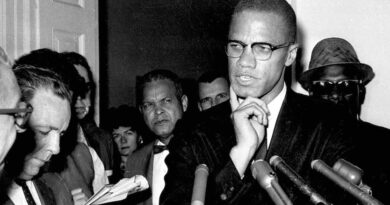Robert Smalls Daring Voyage to Freedom
On the early morning of May 13, 1862, Robert Smalls put his plan into action. By this time the Civil War had broken out, and the Confederates had commandeered the Planter into service. Robert still worked as an enslaved man on the CSS Planter in Charleston along with three other enslaved men. The Union Navy had blockaded Ft. Sumter, and Smalls and the three other enslaved men could see the Union ships from the Charleston Harbor. Sumter. They knew that freedom was not far away. That night all of the white crew had gone ashore for the evening, and Smalls and the other three enslaved men gathered their families on the Planter for a daring voyage. Robert Smalls eased the ship into the current and headed out of Charleston harbor. He was familiar with the waters and rebel routines and steamed the Planter past five Confederate gun batteries, giving the correct signals for safe passage at each. By dawn on May 13, 1862, 23-year-old Robert Smalls surrendered the CSS Planter to the Union forces, and freedom was theirs!
Smalls During the Civil War
Smalls’ exploits both won freedom for himself and for his family. As a result of the fame that came from his daring deed, he was awarded an audience with President Abraham Lincoln where he led the effort to enlist Black men to fight for the Union forces in the Civil War. He helped recruit nearly 5,000 African-American men for the Union army, and these former enslaved men fought valiantly during the Civil War. Smalls fought as a pilot on both the CSS Planter, the ship that he had commandeered to freedom, and the ironclad gunship, the USS Keokuk. He led the Union ships to deactivate mines that he had helped plant while enslaved by the Confederacy and guided the Union forces to Confederate outposts. He also assisted in the destruction of railroad bridges in the harbor area.
Robert Smalls was the first African-American hero of the Civil War. He was later appointed to the rank of Major General in the South Carolina Militia during the Reconstruction period.
He sat at the conference table next to Frederick Douglass as they tried to convince President Abraham Lincoln that African Americans should be allowed to fight for their own freedom. He served five terms in Congress. He ran a newspaper and helped found a state Republican Party.
But first, he had to win his freedom.
To do that, he conceived a plan that struck a blow against the Confederacy so significant that he was heralded across the nation. Carrying out his mission required bravery, intelligence and precision timing — attributes that many whites at that time thought blacks didn’t possess.
Robert Smalls proved them wrong and changed history in the doing.
.jpg?uuid=WJU-wl78EeG7AagP6KVIBg) Robert Smalls photographed circa 1870-1880. A Civil War hero, Smalls served in the U.S. House of Representatives during the Reconstruction era. (Library of Congress Prints and Photographs Division. Brady-Handy Photograph Collection)
Robert Smalls photographed circa 1870-1880. A Civil War hero, Smalls served in the U.S. House of Representatives during the Reconstruction era. (Library of Congress Prints and Photographs Division. Brady-Handy Photograph Collection)Smalls was born in Beaufort, S.C., on April 5, 1839, the son of Lydia Polite, a slave who was a housekeeper in the city home of John McKee, owner of the Ashdale Plantation on Lady’s Island, one of the Sea Islands. Though he never knew the identity of his father, it was widely believed that Smalls was the progeny of McKee’s son, Henry.
“There was a distinctly fatherly relationship between [Henry McKee] and my great-grandfather,” said Helen Boulware Moore of Lakewood Ranch, Fla., who grew up hearing stories about Smalls from her grandmother, Elizabeth Lydia Smalls Bampfield, his
daughter.
Growing up at the McKees’ place, Smalls played with both black and white children, ate food cooked in the kitchen where his mother worked and slept in a bed in a small house that was provided for her. Polite had been taken from her family on the island plantation at age 9 to work as a companion to the McKee children in Beaufort.
Because of his connection to Henry McKee, Smalls was allowed “to go places and do things others couldn’t do. That could cause problems with blacks . . . and could be a dangerous thing with whites, as well,” said Michael Allen of the National Park Service’s Gullah/Geechee Cultural Heritage Corridor, which runs through South Carolina.
The town of Beaufort maintained a 7 p.m. daily curfew for blacks, but on many occasions young Smalls ignored the bell and continued to play with white children. Several times, he was taken into custody. Henry McKee paid a fine to retrieve him, Moore said.
When he was 10, his mother sent him to the plantation to learn the reality of slave life. He came back defiant, not willing to comply, as she had hoped.
“He acted as if he could do what the white children did, and that frightened her,” Moore said. “She wanted to educate him about the whole issue of slavery to save his life.”
Worried that her son would suffer consequences for his bold behavior, Polite asked McKee to rent out Smalls at age 12 to work in nearby Charleston. Each week, he was given $1 of his wages; the rest went to the McKees. He supplemented his income by purchasing cheap candy and tobacco and reselling them.
At age 18, Smalls met Hannah Jones, an enslaved hotel worker who had two daughters. He sought permission to marry and live with her in an apartment in Charleston, Moore said.
“He was smart enough to know that at any moment, she and any children they had might be sold, so he asked her enslaver,” who agreed, Moore said.
Smalls became skilled at working on ships, eventually advancing to the position of pilot. In 1861, he was hired to work on a steamer called the Planter, which was used to transport cotton to ships headed to Europe. But once the Civil War started, the Confederates seized it for use as an armed transport vessel.
Smalls knew how to navigate. He knew that the white crew trusted him. He had his eye on freedom, and all he needed was an opportunity.
“They were going to seize the ship,” said Lawrence Guyot, a black-history expert in Washington. “It was dangerous. It was daring. It was unprecedented. And when they accomplished it, it was used to demonstrate that blacks could be brave and strategic in pulling off military maneuvers. Because of what happened on the Planter, Abraham Lincoln decided to let African Americans join the fight in the Civil War.”
Moore, a retired professor, pointed out that “a lot is said about [Smalls’s] patriotism, but it was not simply patriotism that led him to act. His priority was his family.”
Smalls had sought to purchase his wife, his two young children and his wife’s daughters, but the price of $800 was too steep.
In the early hours of May 13, 1862, the Planter’s crew took an unapproved furlough into town, leaving Smalls, 23, and several other black crew members aboard. Wearing a captain’s coat and hat and taking care to hide his black face, Smalls steered the ship toward a rendezvous spot to pick up the men’s families.
“It was really dangerous because they were flying the Confederate flag,” Moore said. “They made a decision that they wouldn’t be taken alive. . . . If they had been caught, they were going to ignite the explosives and die on the ship.’”
Through Charleston Harbor and past several Confederate lookouts, the ship steamed. Smalls signaled at the appropriate points, as he’d seen the captain do.
By dawn, the Planter had reached the federal blockade of the harbor. The crew lowered the Confederate flag and hoisted a white sheet that Hannah had brought from the hotel where she worked, Moore said.
“One of the most heroic and daring adventures since the war commenced was undertaken and successfully accomplished by a party of negroes in Charleston,” trumpeted the June 14, 1862, edition of Harper’s Weekly.
Commodore S.F. DuPont, the commander of the federal fleet barricading Fort Sumter, in Charleston Harbor, wrote to the Department of the Army that Smalls provided information “of the utmost importance” to the Union, such as the location of mines he had helped lay in the harbor while working for the Confederacy, news accounts show.
This May marks the 150th anniversary of the seizure of the Planter. A commemoration is scheduled for May 12-13 in Charleston.
“Somebody should make a movie about this guy,” said Frank Smith, founding director of the District’s African American Civil War Memorial Museum, which includes an exhibit about Smalls. “If you are looking for a heroic character, it would be hard to invent one with better qualifications than Robert Smalls.”
Smalls became a ship pilot for the Union, serving as a volunteer until he was commissioned as a second lieutenant in Company B of the 33rd Regiment, U.S. Colored Troops. He fought in 17 battles and is credited with recruiting 5,000 blacks. He was later designated a major general in the South Carolina militia.


